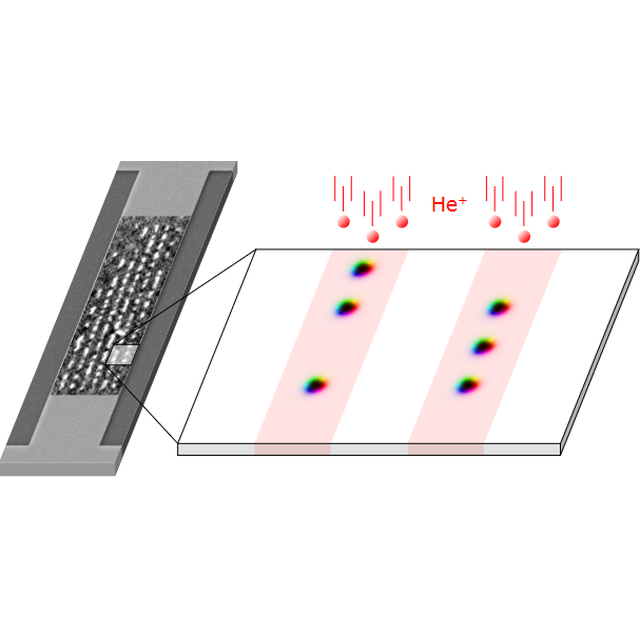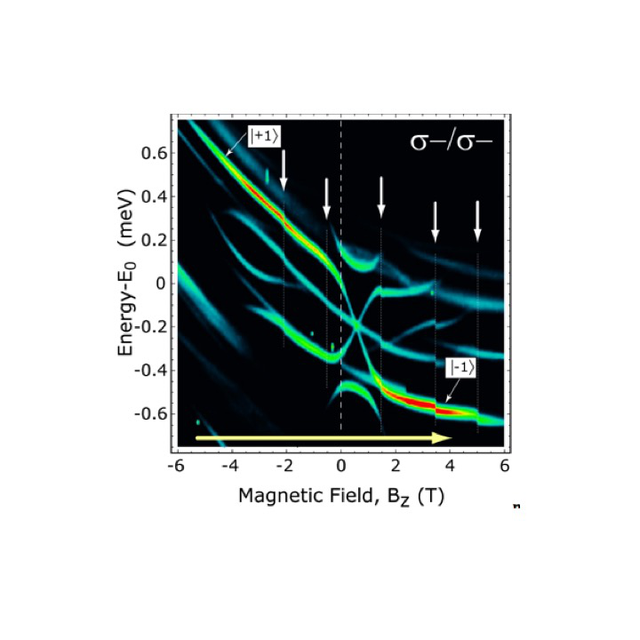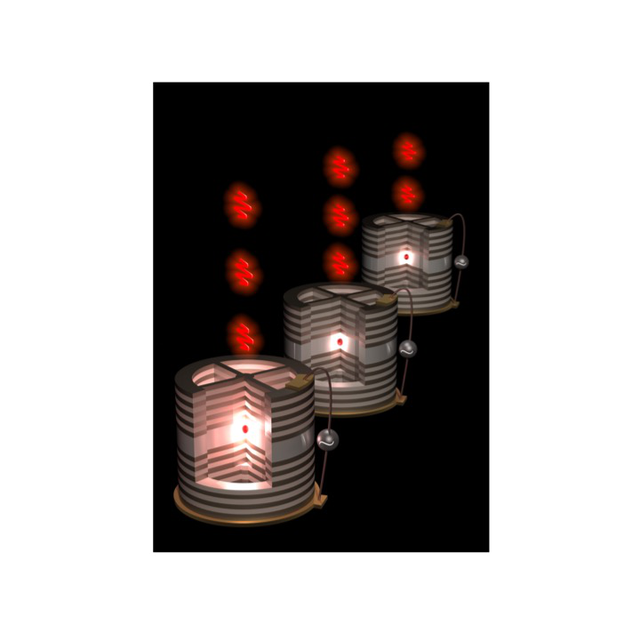Magnetic skyrmions are deemed to be the forerunners of novel spintronic applications. Due to their nanometric size and predicted efficient current-induced manipulation, magnetic skyrmions hold great promise as future information carriers in ultra-fast, high-density non-volatile memory and logic devices. While their observation and their current-driven motion at room temperature have been demonstrated, certain issues regarding their nucleation, stability, pinning, and the skyrmion Hall effect still need to be overcome to realise functional devices. Here, we demonstrate that focused He+ irradiation can be used to create and guide skyrmions in magnetic racetracks. We show that the reduction of the perpendicular magnetic anisotropyand the Dzyaloshinskii−Moriya interaction in the track defined by ion-irradiationleads to the formation of stable isolated skyrmions. Current-driven, skyrmion motion experiments and simulations reveal that the skyrmions move along the irradiated track, resulting in the suppression of the skyrmion Hall effect, and that the maximum skyrmion velocity can be enhanced by tuning themagnetic properties. These results open up a new path to nucleate and guide magnetic skyrmions in racetrack devices, bringing them one step closer to applications.
Reference
Nano Lett. 2021, 21, 7, 2989–2996
Roméo Juge1, Kaushik Bairagi1, Kumari Gaurav Rana1, Jan Vogel2, Mamour Sall3, Dominique Mailly4, Van Tuong Pham1, Qiang Zhang1, Naveen Sisodia1, Michael Foerster5, Lucia Aballe5, Mohamed Belmeguenai6, Yves Roussigné6, Stéphane Auffret1, Liliana D. Buda-Prejbeanu1, Gilles Gaudin1, Dafiné Ravelosona4, and Olivier Boulle1
1Univ. Grenoble Alpes, CNRS, CEA, Grenoble INP, Spintec, 38000 Grenoble, France
2Univ. Grenoble Alpes, CNRS, CNRS, 38000 Grenoble, France
3Spin-Ion Technologies, 91120 Palaiseau, France
4Centre de Nanosciences et de Nanotechnologies, CNRS, Universit ́e Paris-Saclay, 91120 Palaiseau, France
5ALBA Synchrotron Light Facility, 08290 Cerdanyola del Valles, Barcelona, Spain
6Laboratoire des Sciences des Procédés et des Matériaux, CNRS, Université Sorbonne
DOI : https://doi.org/10.1021/acs.nanolett.1c00136
Figure caption
On the left, a magnetic microscopy image showing trains of skyrmions 100 nm in size (white) in magnetic tracks defined by a focused He+ionbeam. These tracks are separated by a uniformly magnetised region (black) which acts as a barrier, creating channels for the skyrmions to move in a straight line. This is shown in the diagram onthe right, which shows two irradiated tracks (in red) separated by a uniformly magnetised region (in white).








